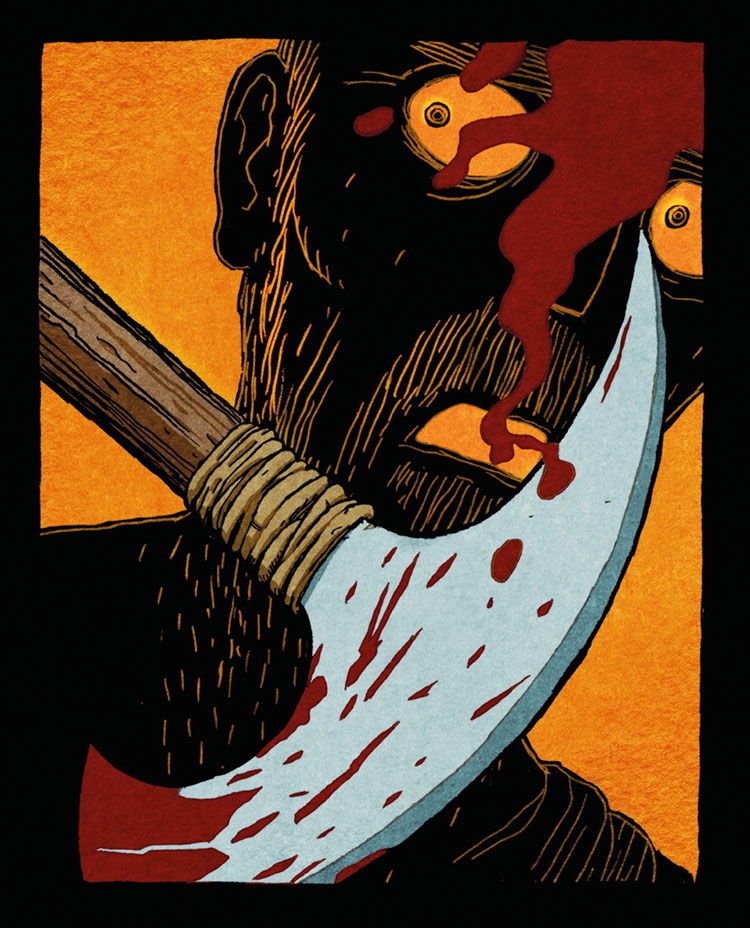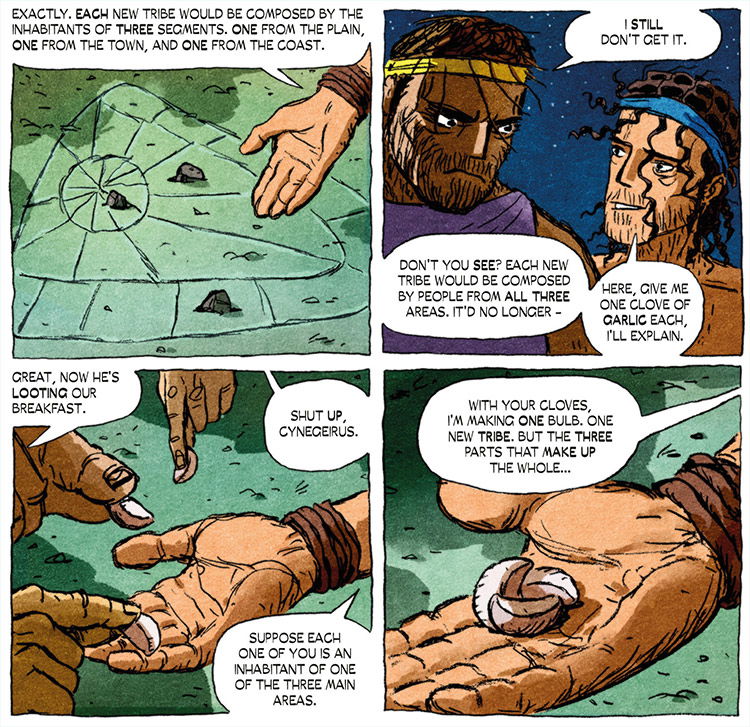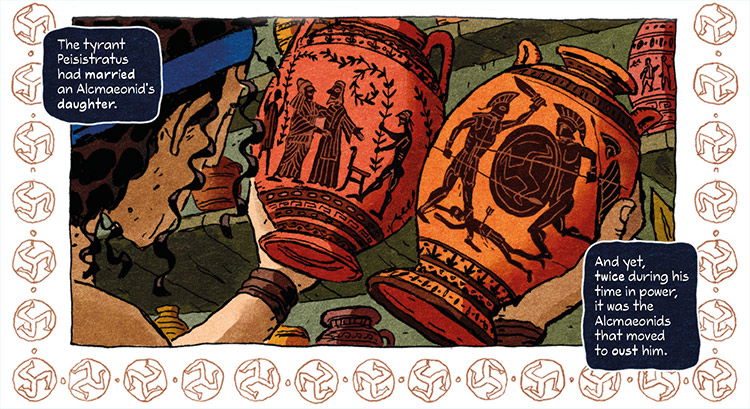Graphic novels have produced some of the most original historical fiction in the postwar period.

From Democracy, 2015Debate about whether graphic novels or, comics, should be studied as serious literature is a non-starter: they should, and some of the most original historical fiction of the late-20th century has been produced in graphic form. Art Spiegelman’s Maus (1980), for example, is read alongside Elie Wiesel and Primo Levi as a staple text on any Holocaust literature module. Topically, with the constant tide of ‘case-solved’ Ripper books (and a contentious new museum), Alan Moore’sFrom Hell (1989), with its detailed notes and deliberately self-doubting conclusion looks increasingly like the most balanced work in the ‘Rip-lit’ cannon. Moore excels at the ‘language of comics’: consider the originality with which he expresses scepticism for historians’ continued hunt for the elusive Ripper in this section ofFrom Hell ‘Dance of the Gull Catchers’ (in Moore’s text the Ripper is Queen Victoria’s surgeon, William Gull):
 Page from Alan Moore's 'From Hell' (1989)
Page from Alan Moore's 'From Hell' (1989)
This needs stating because there is a noticeable lack of coverage of both historical – and non-historical – graphic fiction in the culture sections of most publications, this one included. Recent historical graphic works of note include Jason Lutes’Berlin series (2000–), which chronicles the decline of the Weimar Republic and, this year, Democracy (Bloomsbury) by Greek artist Alecos Papadatos and writer Abraham Kawa. Set in classical Athens in 490 BC, the novel takes the form of a Bildungsroman of its fictional protagonist, aspiring artist Leander, who has witnessed the ousting of tyranny and establishment of democracy in the city, and now holds his fellow soldiers captive with the story on the eve of the Battle of Marathon. As such, the novel covers some of the same events that Herodotus described in his Histories nearly 2,500 years before. That Herodotus is such a natural storyteller (often, some have said, at the expense of being a historian) means that he is particularly suited to adaptation, though in this instance he is an indirect source.
An obvious point to make is that the visual nature of a graphic novel is a brilliant way of presenting this era of history, much of our own understanding of which relies upon faded visual culture in lieu of lost written artefacts. Leander’s story strings together many aspects of classical Athens. As a young boy he walks in the Agora and paints a mural depicting the story of Agamemnon and Clytemnestra, a reference to the Homeric Age of Heroes that we know to have been a vivid and ever adaptable presence in the imaginations of the ancient Greeks. The plot brings him into contact with brutish Spartans, fat tyrants and ghoulish Scythians.
Later, fleeing Athens after the murder of the tyrant Hipparchus (the novel touches on conspiracy theories surrounding the real motivation for his death) Leander is employed at Delphi. Here, he overhears the ‘father of democracy’ Cleisthenes – who is described by the novel’s artists as ‘a riddle wrapped in a mystery inside an enigma’ and drawn with piercing blue eyes – arranging the false prophecies that will lead to the disposition of the Athenian tyrants. There is a brilliant illustration of Cleisthenes’ division of Athens into demes, a move that weakened the power of the aristocracy and ushered in democratic reform.

While the book is rich with historical references, it's the chapter covering young Leander’s time working at Delphi that offers its most original depiction of the Classical world. We encounter Delphi in Herodotus, Homer and the myths as a sacred place – the Greeks thought it the centre of the world – issuing oracles which are fated to come true. Typically a reference to Delphi will state that someone has consulted the oracle and learnt, in a cryptic fashion, what actions are required. InDemocracy, Leander is confronted by the practicalities of the site: the difficulty of obtaining an oracle and the corruption which must have been commonplace. In Leander’s experiences at Delphi we see the oracle in its ‘businesslike reality’, encountering a side of it that is rarely described in literature. ‘My life at Delphi was officious, practical, and mad beyond understanding’, he says: ‘For every glimpse of the cold, logical aspect of the place… there was the shadow of a mystery’.
Democracy is a brilliant novel and Papadatos’ colourful evocation of classical Athens is a real joy. But that the graphic image should suit historical storytelling will be no surprise to anyone: consuming history through pictures is nothing new...

Rhys Griffiths is editorial assistant at History Today.
Fonte: History Today (09.12.2015)

Nenhum comentário:
Postar um comentário